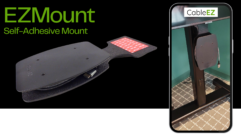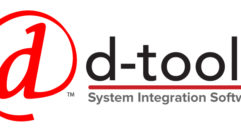
Management Perspectives: Stepping Outside Traditional Co-op Funds
Aug 1, 2006 8:00 AM,
By Don Kreski
How CIM-AudioVisual produced its Beyond the Technology buyers’ guides.
Click here to read more Management Perspectives columns

“We wanted to create something of high quality, something that really spelled out what we did as company,” says JR Gayman, marketing manager of Columbus, Ind.-based integrator CIM Audio Visual. Gayman recently completed the second edition of two Beyond the Technology buyers’ guides, each a 28-page, full-color magazine promoting CIM’s AV design and installation services. “We also wanted staying power” Gayman explains, “meaning a marketing piece that customers would actually take some time to flip through and keep around the office.”
Gayman was able to fund the publications mostly using special vendor funding outside of traditional co-op. CIM suppliers bought in, he explains, because of a level of trust they had built up over many years of doing business. “Sharp in particular had seen our numbers continue to increase. Since this was something that we felt confident would be better than any other material that we had put out there before, they gave us the leeway to go for it.”
The project has been a success, Gayman says, largely because of its focus on educating customers and on reaching them at the level of knowledge and interest that they have. “These were not necessarily new concepts,” he says. “The stories in these magazines consist of the same type of information that we provide our customers in emails, on the phone, at shows, and in sales calls.” Yet, by compiling the information in this format, “we give sales people something they can talk about and help the customers instantly realize the size and the quality of projects that our company has completed. This speaks volumes to someone getting ready to make a large investment in a technology-based system that will need ongoing support.”
Two markets
Gayman produces two versions of the customer magazine. One version, titled simply “Beyond the Technology,” addresses the corporate, house of worship, and university markets. It includes articles on how CIM customers have addressed business problems and explains important issues in the purchase of presentation, digital signage, and other types of AV system.
The second Beyond the Technology – K-12 Technology Resource Guide is tailored to the specific needs of schools. It includes articles on choosing projectors, projector monitoring, Smart Boards, and other technology solutions.
Both publications step away from the conventions of traditional dealer catalogs. They don’t list large numbers of products. They avoid mentioning pricing or detailed specifications. Yet, they fill some of the void created by the demise of the printed catalog, in that they give salespeople something tangible they can put in the hands of potential clients that will enhance the credibility and authority of the dealership. “I think it has been ideal from a sales perspective,” Gayman says, “to be able to provide customers a quick company resume, complete with photos.”
CIM produces both a printed and pdf-version of each magazine, and sales people include them with proposals, hand them out on sales calls, give them away at trade shows, and mail them to prospects requesting company information. Gayman has also used them in larger mass mailings and email broadcasts, and he makes them available to download from the CIM website. He says, however, that he feels the printed versions are much more effective than the electronic. “PDFs are great for one or two pages of information,” he explains. “But a high-quality print publication will be seen and hopefully stick around long enough to be read.”
Producing the magazines
Gayman says that the idea for the buyers’ guides came out of his own background in magazine publishing. He began work last fall, finishing the two initial issues in December. Two more issues followed in May. “The first go round took almost two months working full time to hammer through the design, stories, and photography.” Production was relatively straightforward. “We looked at the hottest products in the market: digital signage, videoconferencing, audioconferencing, and, for K-12: projection, SmartBoards, and video over IP. Then we just picked jobs we had done that highlighted them.” Next, Gayman asked salespeople to approach their customers and secure their agreement for interviews and photography. “Most were great about going forward, but if it was an organization that had a lengthy approval process, we just left off the names and made it more of a generic write up.”
Gayman says he did not approach vendors for funding until the initial issue was nearly complete. “If we would have waited until the manufacturers made the first leap, I doubt we would be discussing this now,” he says. But with the first issue in hand, he approached Sharp and asked them to provide the lion’s share of the funding he would need to make the program viable.
“We were going through with the project, regardless of whether they stepped up and underwrote it,” says Gayman. “But they liked what they saw and bought into our plan after we had taken it to that level.” Once Sharp was onboard, he approached other vendors who have more traditional co-op funds.
Gayman says he was particularly pleased that Sharp was willing to support a publication that was a little out of the ordinary, with funding beyond what might be strictly dictated by their product sales. “Most vendors only give marketing funds based on a percentage of sales,” he explains. “They also have certain guidelines that you must follow to be qualified under their program.” That’s fine, as far as it goes, he says, but “under this structure it seems like the industry will continue to see similar marketing efforts without much creativity and thought.”
That’s the last thing Gayman wants to do with CIM’s marketing program. With his Beyond the Technology magazines, he has been able to step outside traditional co-op to make an unusual marketing idea work well.










